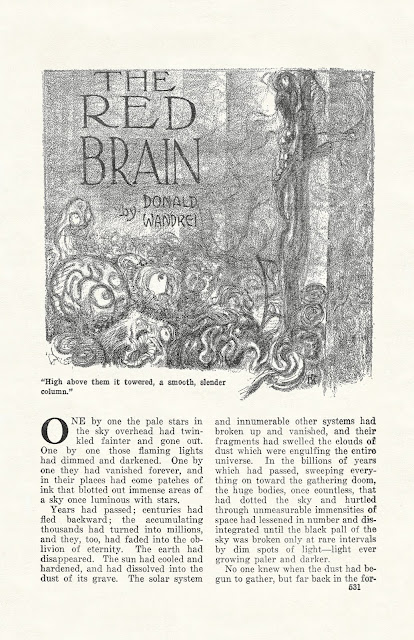 |
| WEIRD TALES, October 1927. Illustration by Hugh Rankin. Click for larger view. |
Because Donald Wandrei was only sixteen years old when he wrote "The Red Brain," a gentler person might look away from its prose. Being as gentle as a hornet, I wish the editor had taken Wandrei aside and shown him that a story can only repeat its opening information so many times before the reader wants to hurl that pile of echoing paper into the woodstove.
 |
| Repeat, repeat, repeat until the reader screams. |
Once the story has limped beyond the first two pages, it does reveal an interesting core. Wandrei has combined the "dying universe" concept explored by previous writers like George Sterling and Leconte de Lisle with a mood similar to "The Masque of the Red Death." I can excuse Wandrei's inability to handle the concept with the poetic skill of Sterling (in "The Testimony of the Suns") or of de Lisle (in "L'Astre Rouge, "La Joie de Siva," "Solvet Saeclum," "La Dernière vision"); very few of us can write so well. The concept remains a good one.
But is a concept enough to save a story? No. Style and structure matter, because these are the only tools a writer has to convey a concept with economy, clarity, and force. With its rhetorical style and repetitive structure, "The Red Brain" is a could-have-been story: it could have been good, if someone had shown the writer better ways to handle his ideas. *
* We know from his article in the Overland Monthly (December, 1926) that Wandrei admired Clark Ashton Smith's poetry, but I have no idea of how much Wandrei knew at the time about Smith's prose. Smith had a better grasp of pacing and structure than anything shown here, and he made stories move: he could integrate exposition, physical description, and settings in ways that put readers inside a story, as participants. Wandrei does nothing like this in "The Red Brain."
No comments:
Post a Comment